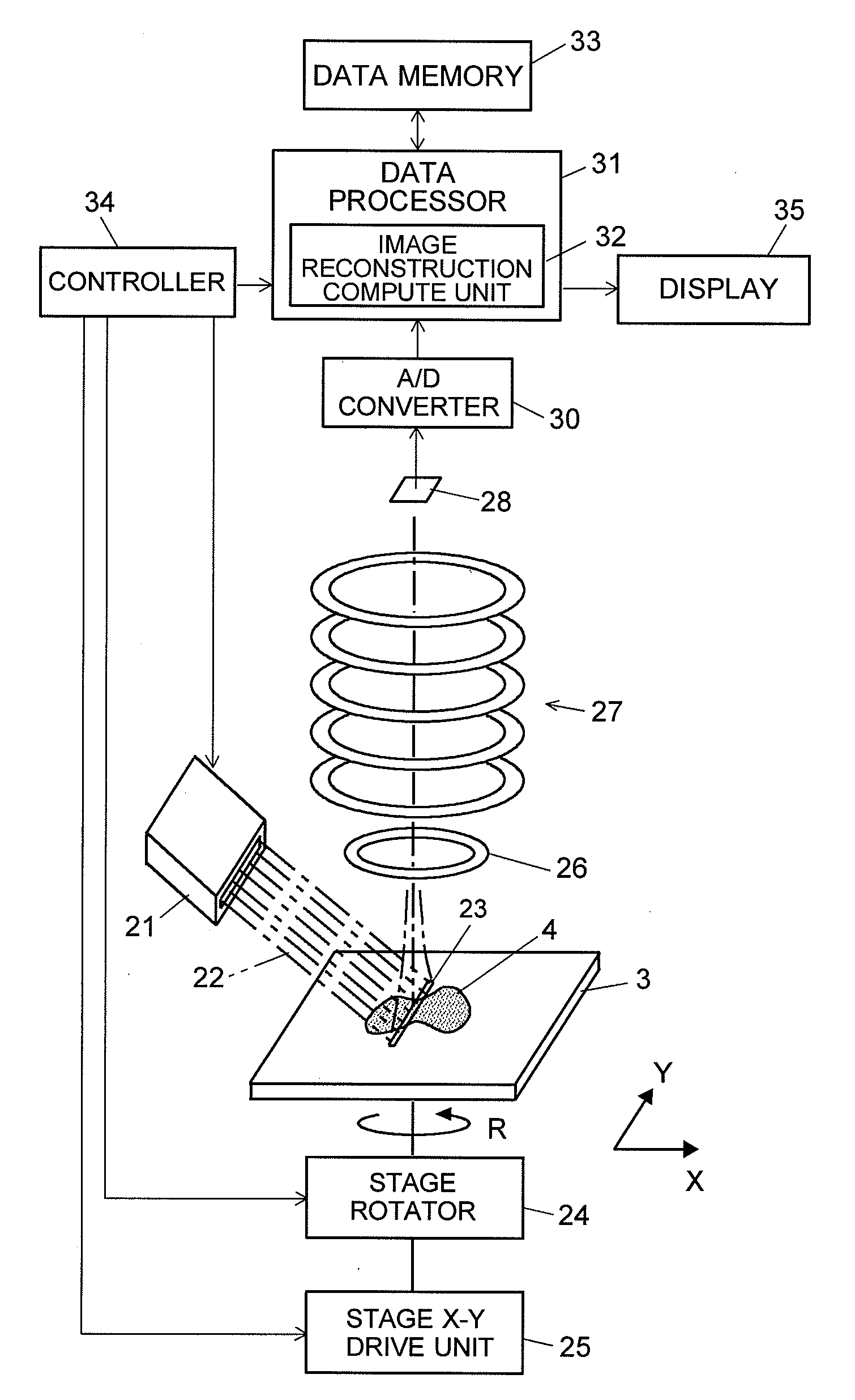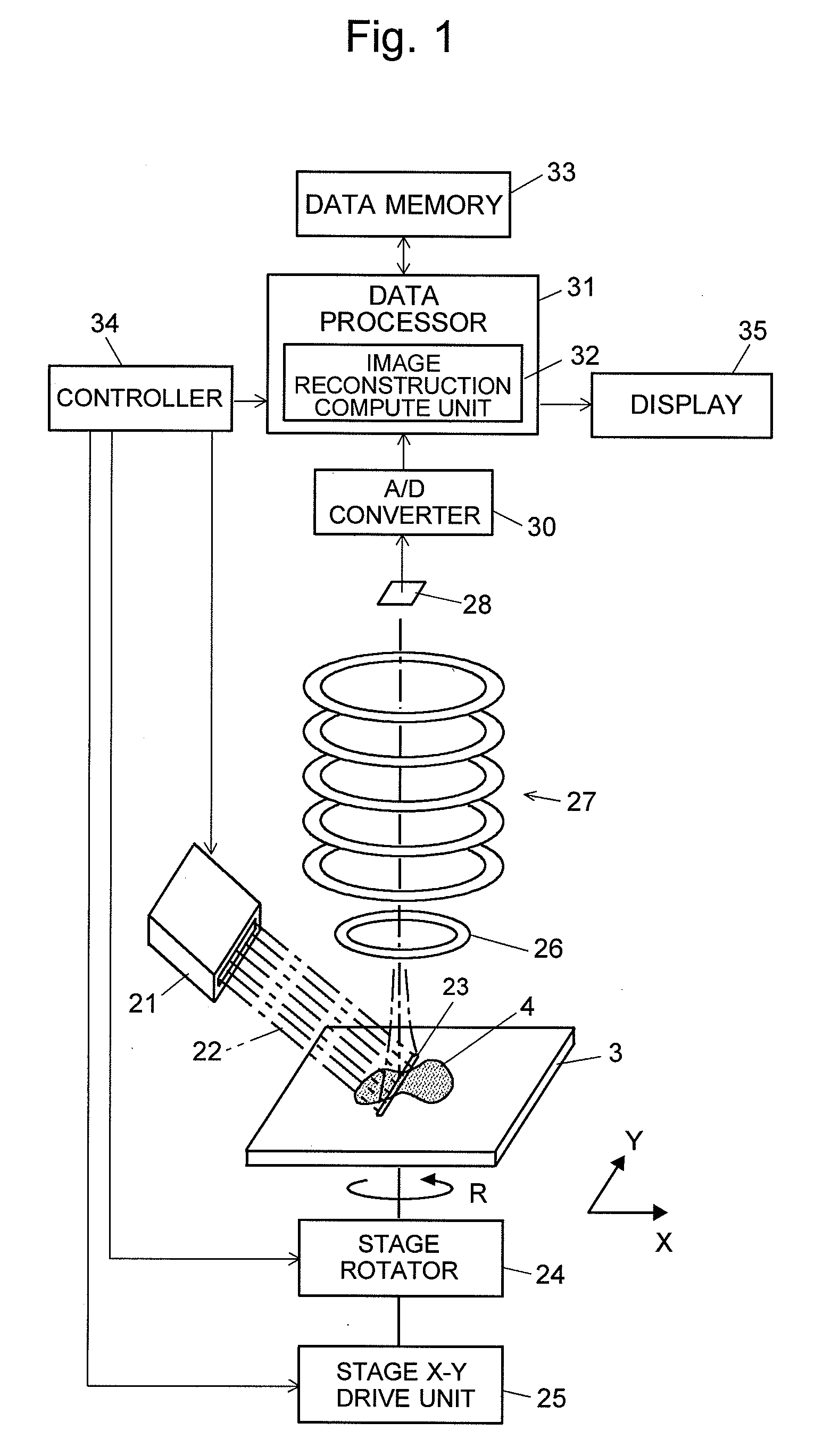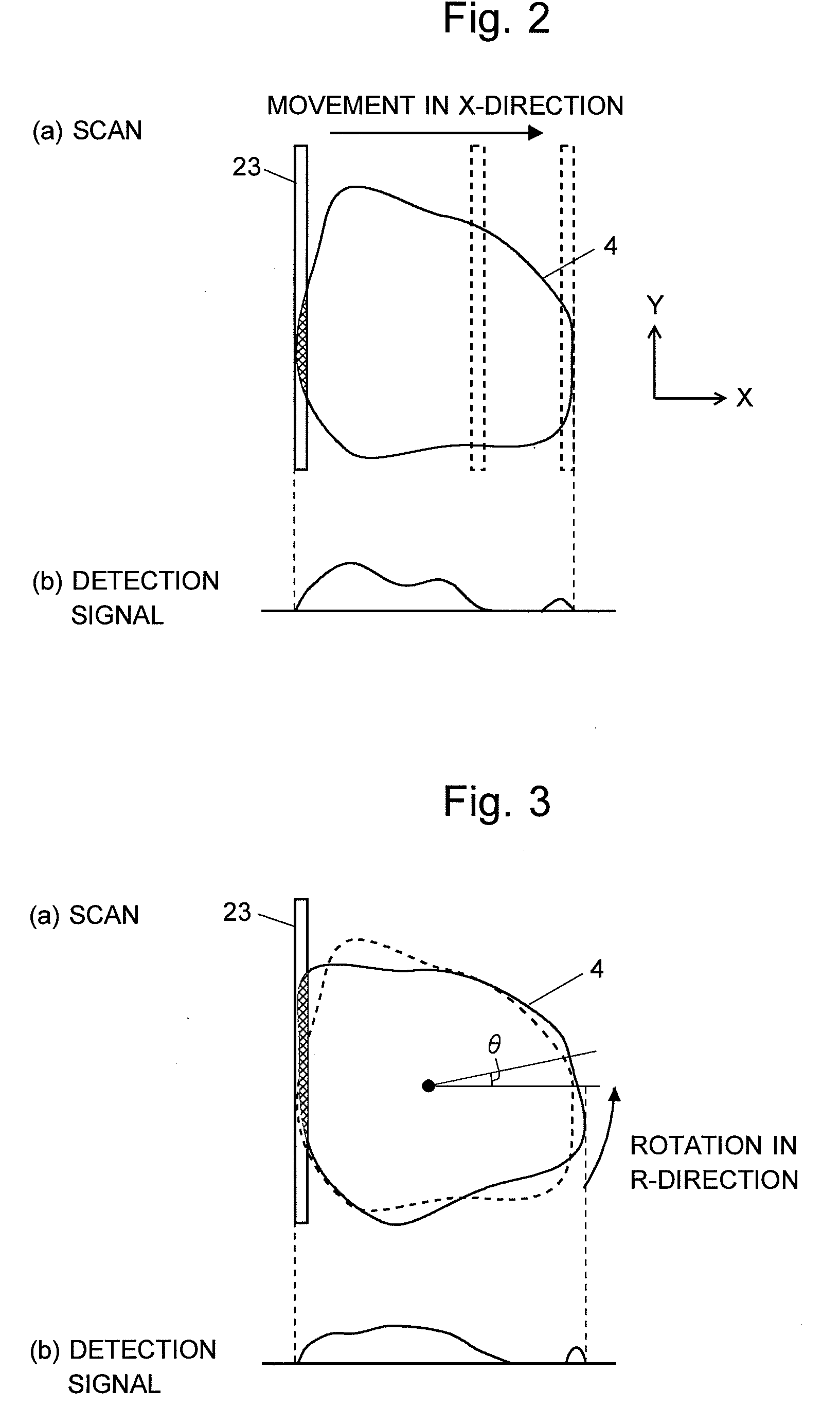Mass spectrometer
a mass spectrometer and mass spectrometer technology, applied in the field of mass spectrometers, can solve the problems of inability to narrow down the laser to a diameter approximately a few dozen m on the sample surface with current technology, the number of repeated analysis tasks will be enormous, and the spatial resolution in creating a two-dimensional substance distribution image is improved, so as to enhance the identification accuracy of each substance, the effect of sufficient spatial resolution and accuracy
- Summary
- Abstract
- Description
- Claims
- Application Information
AI Technical Summary
Benefits of technology
Problems solved by technology
Method used
Image
Examples
first embodiment
[0038]Regarding one embodiment of the mass spectrometer according to the first aspect of the present invention, its configuration and operation will be explained in detail. Hereinafter, this embodiment will be called the “first embodiment.”FIG. 1 is an overall configuration diagram of the mass spectrometer of the first embodiment. In FIG. 1, the same components as in previously-described FIGS. 6 and 7 are indicated with the same numerals and the explanations are omitted.
[0039]In the mass spectrometer according to the present invention, the laser irradiator 21 delivers a laser light 22 onto a linear area having a predetermined length (i.e. one-dimensional area). The sample stage 3 can be rotated in the R-direction around the axis perpendicular to the stage surface by the stage rotator 24, and the sample stage 3 is also linearly movable, at each rotational position determined by the rotation as just described, in the x-axis and y-axis directions by the stage X-Y drive unit 25.
[0040]Wh...
second embodiment
[0050]Regarding one embodiment of the mass spectrometer according to the second aspect of the present invention, its configuration and operation will be explained in detail. Hereinafter, this embodiment will be called the “second embodiment.”FIG. 4 is an overall configuration diagram of the mass spectrometer of the second embodiment. In FIG. 4, the same components as in the previously described FIGS. 1, 6 and 7 are indicated with the same numerals and the explanations are omitted.
[0051]In the mass spectrometer according to the present embodiment, the laser light 42 diffusing to some extent is delivered onto the sample 4 from the laser irradiator 41. The ions generated from the irradiated area 43 on the sample 4 are collected by the ion collector 26 and introduced, in a mixed state, to the mass separator 27. In this mass spectrometer, the following two operations are completely different from those in the first embodiment: the scanning by the stage X-Y drive unit 25 for driving the s...
PUM
 Login to View More
Login to View More Abstract
Description
Claims
Application Information
 Login to View More
Login to View More - R&D
- Intellectual Property
- Life Sciences
- Materials
- Tech Scout
- Unparalleled Data Quality
- Higher Quality Content
- 60% Fewer Hallucinations
Browse by: Latest US Patents, China's latest patents, Technical Efficacy Thesaurus, Application Domain, Technology Topic, Popular Technical Reports.
© 2025 PatSnap. All rights reserved.Legal|Privacy policy|Modern Slavery Act Transparency Statement|Sitemap|About US| Contact US: help@patsnap.com



